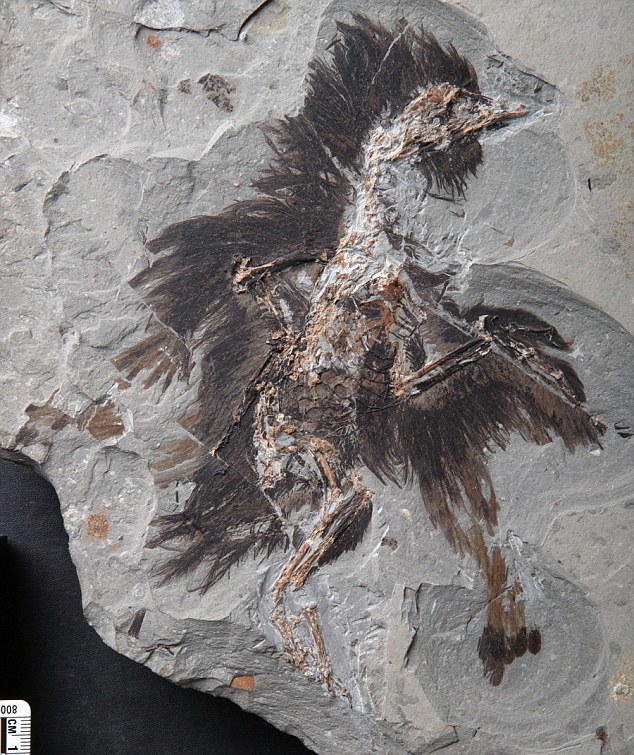21 November 2016, By LIBBY PLUMMER FOR MAILONLINE
A new breakthrough could enable us to tell what colour dinosaurs were based on their fossils.
Researchers have pinpointed the oldest known example of beta-keratin - a common red-orange pigment - in a 130-million-year-old bird feather fossil.

The fossil of the extinct Eoconfuciusornis bird was collected from the Early Cretaceous lake deposits in Hebei, northern China.
Feathers and feather-like features of the skin of several types of dinosaurs and basal birds are well documented.
The term 'basal birds' relates to species that are close to the base of the evolutionary chain.
Microbodies associated with these feathers were first interpreted as microbes - single-cell organisms.
However, many scientists now believe that these are actually remnant melanosomes - the part of an animal cell where melanin is synthesised and stored.
Melanin is the most common light-absorbing pigment found in animals and is also responsible for skin colour in humans.
Remnant melanosomes could tell us more about the colour, behaviour, habit and physiology of dinosaurs and ancient birds.
However, melanosomes and microbes overlap in size and shape so until now, scientists haven't been able to differentiate between the two in fossilised feathers.
That's why a team of international scientists led by researchers from the Chinese Academy of Sciences set about determining the existence of melanosomes in bird feather fossils.
They used various molecular and chemical methods to pinpoint the melanosomes.
FEATHERS ARE THE KEY TO DINOSAUR COLOURS
In September, a similar study detailed how scientists had developed a new technique that may finally allow them to determine the colour of fossilised feathers and perhaps even scales of extinct creatures. The research used high-powered X-rays to detect long-lived chemical fingerprints that are associated with the pigments in feathers. They say looking for these in fossils will finally allow them to work out the colours of bird-like dinosaurs like Archaeopteryx, Velociraptors and relatives of the giant Tyrannosaurs rex.
Professor Phil Manning, a palaeontologist at the University of Manchester who was one of the authors of the new study, said: 'The avian descendants of dinosaurs have kept the chemical key to unlocking colour precisely in their feather chemistry.'
From: http://www.dailymail.co.uk/sciencetech/article-3957800/Dinosaurs-finally-true-colours-Oldest-red-pigment-130-million-year-old-feather.html
